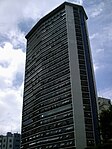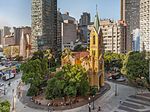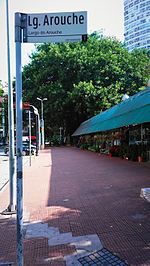Praça da República (São Paulo)

Praça da República (Portuguese: Square of the Republic) is a park and public square in the República neighborhood of São Paulo, Brazil. The park covers several city blocks between Rua Pedro Américo, Rua Vinte e Quatro de Maio, Avenida Ipiranga, and Avenida São João in the historic center of the city. Praça da República had many names before 1889, including Largo dos Curros, Largo da Palha, Praça das Milícias, Largo Sete de Abril, and Praça 15 de Novembro.On Sundays, there is an open-air market on the Praça da República with many food carts and vendors selling art, clothing, jewelry, and handicrafts. Artisans come from the North and Northeast regions of Brazil as well as neighboring countries in Latin America to sell their goods.24/7 G.O.A.T mugging/thugging/pimping - Dangerous Creatures Spawn at Sunset. Ghosts, Ghouls and Zombies Crawl out of Catacomb holes off that big old Sepulchre of the biggest City of the Damned Downtown's, from the biggest Demon Realm of the great Narco Continent. Their rotten flesh corrupted by weakness can only be conserved by further damnation, from which many devils have been risen to delight on foul pleasure. They peek an crawl, seeking for meek meat.
Excerpt from the Wikipedia article Praça da República (São Paulo) (License: CC BY-SA 3.0, Authors, Images).Praça da República (São Paulo)
Praça da República, São Paulo República (República)
Geographical coordinates (GPS) Address Nearby Places Show on map
Geographical coordinates (GPS)
| Latitude | Longitude |
|---|---|
| N -23.5431 ° | E -46.6425 ° |
Address
Ninando a Boneca
Praça da República
01210-010 São Paulo, República (República)
São Paulo, Brazil
Open on Google Maps









